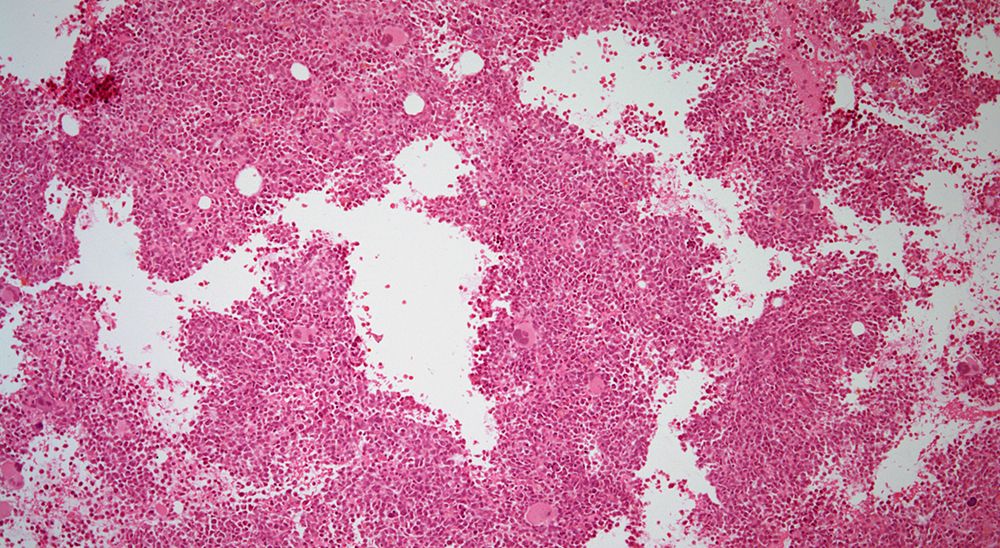IO-202 Earns FDA Orphan Drug Designation in Chronic Myelomonocytic Leukemia
Investigators are evaluating IO-202 in patients with newly diagnosed chronic myelomonocytic leukemia as part of a phase 1 dose expansion trial.
Treatment with IO-202 plus azacitidine for patients with acute myeloid leukemia and those with chronic myelomonocytic leukemia who have received no hypomethylating agents is under assessment as part of a dose-expansion phase 1 clinical trial (NCT04372433).

The FDA has granted orphan drug designation to IO-202 as a treatment for patients with chronic myelomonocytic leukemia (CMML), according to a press release from Immune-Onc Therapeutics, the developers of the agent.1
Developers designed IO-202 as a first-in-class humanized IgG1 antibody that binds to and kills LILRB4 cells with antibody-dependent cellular cytotoxicity and antibody-dependent cellular phagocytosis. It is believed that the agent may provide a benefit in patients with blood cancers as well as those with autoimmune and inflammatory diseases.
Treatment with IO-202 plus azacitidine for patients with acute myeloid leukemia (AML) and those with CMML who have received no hypomethylating agents is under assessment as part of a dose-expansion phase 1 clinical trial (NCT04372433).
According to findings presented at the 2023 European Hematology Association (EHA) Congress, IO-202 monotherapy produced a partial remission (PR) in 1 patient in the AML cohort and yielded clinical benefit in a patient with CMML for more than a year.2 Additionally, combining IO-202 with azacitidine produced a complete remission (CR) lasting for more than 10 months in a patient with AML. Among those with CMML, combination therapy produced an optimal marrow response for more than 3 months in 1 patient, a PR in 1, and clinical benefit in 1.
Any-grade treatment-emergent adverse effects (TEAEs) occurred in 100% of patients receiving IO-202 monotherapy and 100% of those who received IO-202 plus azacitidine. In each respective treatment arm, grade 3 to 5 TEAEs affected 90.3% vs 86.7%, serious TEAEs occurred in 77.4% vs 66.7%, and toxicity leading to death was reported in 25.8% vs 13.3%.
There were no deaths that investigators attributed to treatment with IO-202. Moreover, there were no dose-limiting toxicities, and the study did not reach a maximum tolerated dose.
“CMML is a rare leukemia overlap syndrome characterized by the accumulation of monocytes in the blood and bone marrow, with both myeloproliferative and myelodysplastic features,” study investigator Courtney DiNardo, MD, MSCE, an associate professor in the Department of Leukemia of the Division of Cancer Medicine at The University of Texas, MD Anderson Cancer Center, said in a press release on these findings.3 “These results, showing strong safety and promising clinical activity as both monotherapy and in combination with a standard-of-care chemotherapy for monocytic AML and CMML, suggest that LILRB4 may be an important therapeutic target for hard-to-treat blood cancers.”
In part 1 of this clinical study, patients with relapsed/refractory AML (n = 36) with monocytic differentiation or relapsed/refractory CMML (n = 10) were assigned to receive IO-202 in escalating dose levels from 0.03 mg/kg to 60 mg/kg alone or in combination with azacitidine. Patients received IO-202 on days 1 and 15 of each 28-day cycle plus azacitidine at 75 mg/m2 intravenously or subcutaneously on days 1 to 7.
The study’s primary end points include the incidence and severity of AEs and the incidence of dose interruptions and reductions.4 Secondary end points include response rates and the maximum concentration of IO-202.
Patients 18 years and older who are amenable to serial bone marrow aspirates or biopsies and peripheral blood sampling can enroll on the trial. Other eligibility criteria include having an ECOG performance status of 0 to 2 and adequate hepatic and renal function.
“Although current therapeutic options for CMML can improve a patient’s quality of life, there is a high unmet need for effective disease-modifying approaches that are potentially curative. We are very proud that the FDA has granted IO-202 orphan drug designation for the treatment of CMML. We look forward to continued collaborations with our investigators and the FDA as we work to bring this potentially important therapy to patients with hard-to-treat blood cancers,” Charlene Liao, PhD, chief executive officer and board chair at Immune-Onc, said.1
References
- Immune-Onc Therapeutics announces orphan drug designation granted by US FDA for IO-202 (anti-LILRB4) for the treatment of chronic myelomonocytic leukemia (CMML). News release. Immune-Onc Therapeutics, Inc. February 21, 2024. Accessed March 6, 2024. https://tinyurl.com/593f4u9m
- DiNardo C, Pollyea D, Aribi A, et al. A first-in-human phase 1 study of IO-202 (anti-LILRB4 mAb) in acute myeloid leukemia (AML) with monocytic differentiation and chronic myelomonocytic leukemia (CMML) patients. Presented at: European Hematology Association 2023 Hybrid Congress; June 8-15, 2023; Frankfurt, Germany. Abstract P536.
- Immune-Onc Therapeutics presents IO-202 phase 1 data in patients with relapsed or refractory AML and CMML at the EHA Annual Meeting 2023. News release. Immune-Onc Therapeutics, Inc. June 7, 2023. Accessed March 6, 2024. https://tinyurl.com/mtuxuzev
- IO-202 as monotherapy and IO-202 plus azacitidine ± venetoclax in patients in AML and CMML. ClinicalTrials.gov. Accessed March 6, 2024. https://tinyurl.com/5n7hzx8y
Newsletter
Stay up to date on recent advances in the multidisciplinary approach to cancer.